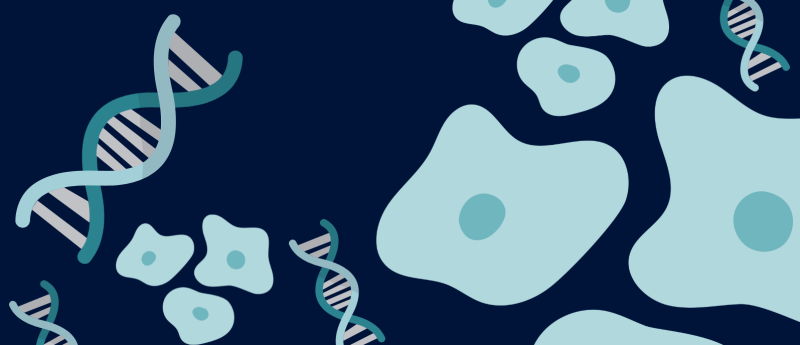Genomic ‘shake up’ allows cells to play the roles of others

Variability in how DNA is packaged allows cells to take on the identity of different cell types.
Researchers from the University of Chicago (IL, USA) have reported that unstable, or ‘noisy’, chromatin enables cells to take on different roles in the body. This flexibility can support the immune system but could also explain how tumors form from previously healthy cells.
All cells in the body contain the same DNA, but different cells will express different genes needed to generate specialized cells, such as the liver or lungs. Chromatin structure and accessibility determine gene expression, as it is usually tightly regulated to sequester regions that encode other cell fates. “Each individual cell does not express the entire genome. Instead, they express only a unique subset of the tissue-specific genes at any given snapshot,” explained Andrew Koh, Assistant Professor of Pathology at the University of Chicago. “There’s a great deal of heterogeneity, so we thought that it was really important to look cell–by–cell to uncover the mechanisms that allow the activation of each subset of tissue-specific genes.”
To investigate this heterogeneity, Koh and his team focused on medullary thymic epithelial cells (mTECs), which play a key role in training the immune system to avoid autoimmunity.
They isolated mTECs from both mice and a human patient and sorted them utilizing fluorescence-activated cell sorting. Koh, lead author Noah Gamble and the team leveraged RNA sequencing to study gene expression and single-cell multiome sequencing to analyze both gene expression and chromatin accessibility within individual cells. They also used CUT&RUN and ChIP-seq data to investigate protein–DNA interactions, providing a comprehensive view of the cells’ molecular profiles.
 Accelerating antibody development with a novel platform
Accelerating antibody development with a novel platform
The oPool+ display platform combines technologies to make and test large numbers of antibodies at once.
When Gamble reviewed the data, he found that there weren’t links between peak levels of chromatin accessibility and the expression of tissue-specific genes. Instead, the data showed ‘chromatin noise’ – areas of the genome they expected to be packed tightly that were more labile or ‘jiggly’. This ‘noise’ gave cells the flexibility to change identity, in turn helping mTEC T cells to differentiate between themselves and potentially threatening invader cells.
The study also revealed that mTECs repress tumor suppressor protein p53 during maturation, helping them avoid cell death before they can transform, and that augmenting p53 activity stabilized cell chromatin, limiting this transformation. However, these stabilized cells prevented resulted in the escape of self-reactive T cells from the thymus, leading to autoimmune disease. Additionally, when p53 was deleted in a lung cancer model, the cancer sampled more of the genome, leading to more aggressive, malignant states.
The team hopes to build on this work and uncover whether this genomic noise could be leveraged to reprogram cells for therapeutic application.
“It makes sense that to empower an immune system that uses a random process to recognize virtually any entity in the universe, thymic epithelial cells amplify random noise in the genome to ensure the immune system is focused on pathogens and cancers and not its own tissues. It’s fighting fire with fire,” concluded Gamble. “The moral of the story is that sometimes the random background noise can be just as important as the signal.”